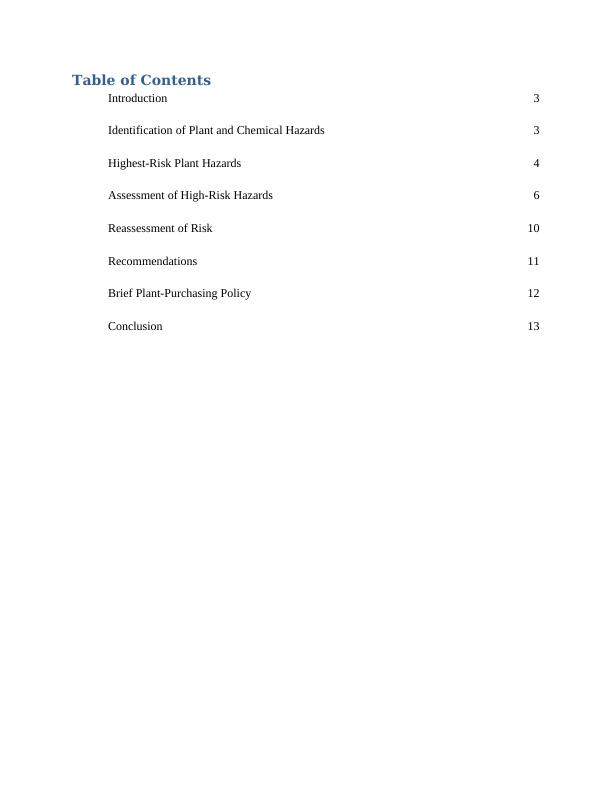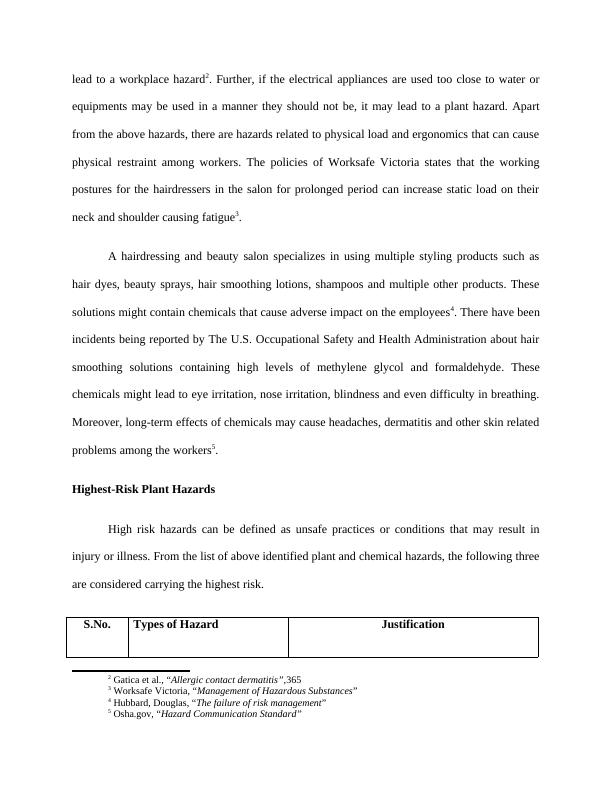Risk Assessment | Plant and Chemical Hazards
Assignment 2 for BUSM4306 WHSW course at Streakers Hair and Beauty Salon. It is an individual risk management report.
17 Pages2657 Words19 Views
Added on 2022-08-17
Risk Assessment | Plant and Chemical Hazards
Assignment 2 for BUSM4306 WHSW course at Streakers Hair and Beauty Salon. It is an individual risk management report.
Added on 2022-08-17
ShareRelated Documents
End of preview
Want to access all the pages? Upload your documents or become a member.
Occupational Health and Safety : Doc
|17
|3364
|17
Work Place Health and Safety at Streaker
|14
|3134
|11
Highest Risk Hazards and Hazards
|28
|4342
|15
The main goal of this risk assessment
|43
|8757
|16
Working Conditions and Health Risk Assessment
|18
|3152
|10
Risk Assessment Activity - PDF
|11
|1953
|253




